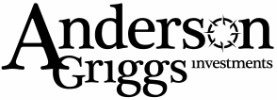|
I am surprised that I have not been granted the title of “Market Guru”. After all, on October 1st of last year I wrote “S&P 500 to gain 10.48% by year end”. On the trading day before this article was written, the S&P closing value was 1132.42. The last trading day of the year the S&P closed at 1257.60. My 10.48% call was not absolutely correct (as the S&P 500’s actual advance was 11.05%), but being one of the few who called for a double digit advance in the averages for the last quarter should have inspired at least a few financial advisors or even a couple of journalists to give me call. Alas! No calls or inquiries came.
I never really made an independent call on the market. All I did was re-frame an article published by Reuters a day or two prior to our own article. Psychologists understand quite a bit about how our mind takes short-cuts when making decisions. One of the most well documented short-cuts is framing—information presented in different ways will often stimulate different emotions which can alter the way you react. Daniel Kahneman gives this example from his book Thinking Fast and Slow: The statement that “the odds of survival one month after surgery are 90%” is more reassuring than the equivalent statement that “mortality within one month of surgery is 10%”. As we enter the New Year, I find similar problems resulting from framing “volatility” in the markets. This framing has led most of us to believe that markets are more volatile than they have ever been. And why shouldn’t we? At the same time I wrote our commentary calling for a market advance, an analysis performed by the New York Times stated that the market is more volatile today than at any time since 1962. The analysis concluded that it is six times more likely for the price of stocks to fluctuate 4 percent or more during intraday trading sessions than it was in the four decades leading up to 2000. With the crash of 2008, the recovery of 2009 and the daily volatility of price swings in 2011, it is easy to see why you would believe that excessive volatility is a permanent fixture in world markets. This mistaken belief could impact your future results—resulting in less than optimal returns. If we reframe volatility and look at price changes on an annual basis instead of a daily basis we can state that the S&P 500’s volatility in 2011 was less than the average volatility of the past 60 years. I am sure a few of you are questioning this statement, so here are a few thoughts to help you:
The highest volatility over the past 61 years corresponded with a market crash or the recovery following the crash with the exception of 1954. For the years in between these events, the market volatility has been far more acceptable to most investors. Throughout the ages generals have formulated strategies and tactics. While these strategies may have been quite effective in the past, many have failed miserably in the present. This tendency to “fight the last war” has ended badly for many of the generals and their armies. Daily price swings may be higher than you like, but, for an investor with a time frame greater than one day, it shouldn’t matter. You may be considering incorporating a risk reduction strategy in your portfolio based on the mistaken belief that markets are more volatile now than they have been in the past. For a long-term investor this action will surely increase your cost and minimize the potential returns that the capital markets can provide you. Comments are closed.
|
Kendall J. Anderson, CFA, Founder
Justin T. Anderson, President
Categories
All
Archives
April 2024
|
|
Common Sense Investment Management for Intelligent Investors
|



 RSS Feed
RSS Feed